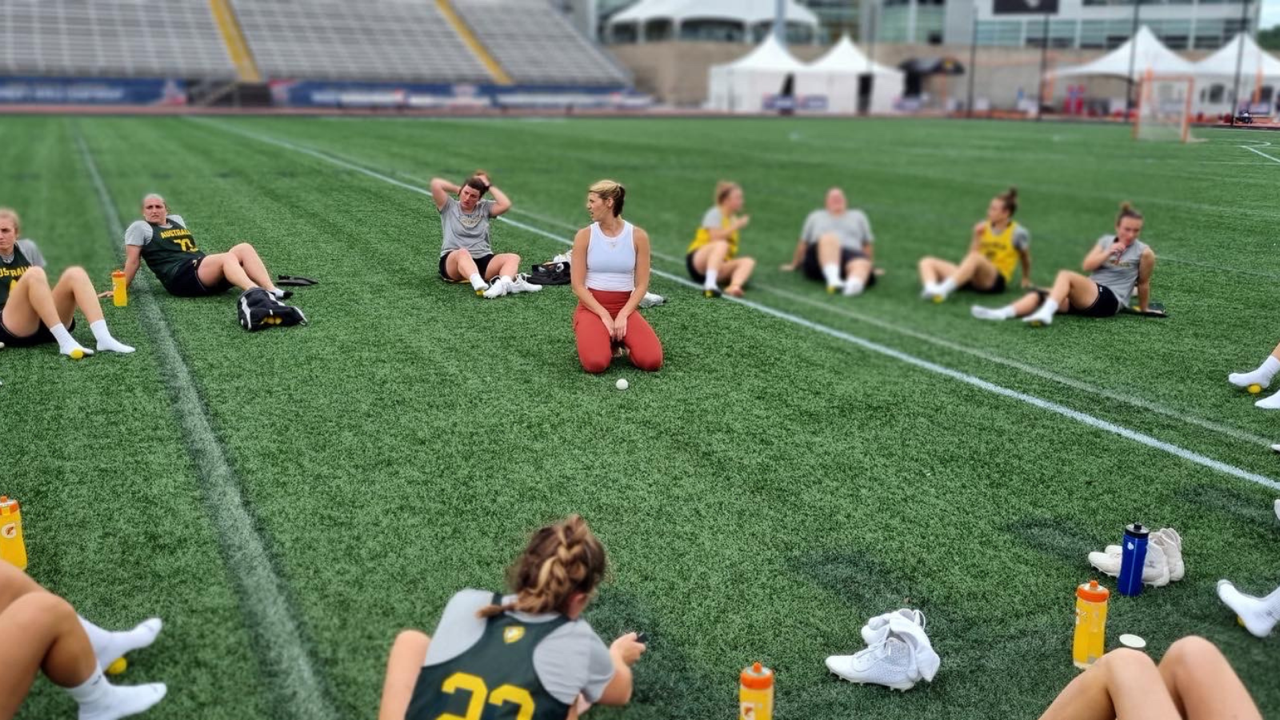Part Three: Building Athlete Nervous System Flexibility

The Nervous System has become quite a hot topic on social media. We need to acknowledge that the NS and building NS flexibility are complex! I see frequent messaging that includes:
- “If you struggle with X it means your nervous system is dysregulated”
- “Try this hack to regulate your nervous system”
- “This 1 thing will regulate your nervous system instantly”
NS flexibility and regulation are so much more than a tool, quick fix or hack. At a foundational level this is about developing a relationship with self. We can’t navigate dysergulation or build NS flexibility if we don't understand our own NS is to begin with!
Heres what regulating the nervous system and building flexibility is NOT about…
- Elimination of pain, discomfort or hard things
- Not being impacted by things
- Being happy and calm all the time
- Never experiencing dysregulation or any symptoms of dysregulation
- Never getting triggered
- Blindly trying tools and skills bc someone on social media tells you its good for you
Building nervous system flexibility for the athlete is about…
- Learning how your NS operates (how we function!). We cannot “navigate” or “regulate” if we don’t understand what we're trying to DO with regulation. This requires us to understand the function of regulation and dysregulation as well as how dysregulation shows up in our lives. This learning is the foundation of our ability to understand what's happening in our system as we experience life.
- Building awareness of your NS states. This is all about developing a deep relationship with self. What are your experiences/cues of safety (regulation) and danger (dysregulation)? Many athletes want to skip over this but its the most important part. I find too many athletes living day to day in dysregulation and have no idea because they aren’t aware. Everyone is unique and individual. Although there are certain pieces of our NS that are “human” we all experience our NS states in our own way. We also have to build our awareness around how our thoughts, feelings, actions and interactions are influenced and impacted by the ANS state we are in.
- Developing tools, skills to help you navigate dysregulation. Yes, tools, skills and practices ARE important. They have a time and a palace. We need to develop ways to navigate in the moment (as dysregulation occurs) and over time. We need to help athletes move beyond “quick fixes” and more towards routines and ways of living that set them up for a flexible NS. This will include many body based or “somatic” practices because the NS doesn’t understand verbal language. We have to work with the body.
- Build capacity for dysregulation. Remember dysregulation serves a purpose. The goal isn’t to NEVER be dysregulated. To some degree being human (and being a resilient human) requires us to BUILD our capacity to experience tough stuff. Too many athletes experience dysregulation in their system and want to fix, solve or eliminate it right away. Part of working with your NS is learning how to move away from “solving” and into “being”.
When we have a flexible nervous system we might experience things like…
- “I feel balanced and at my best mentally, emotionally, physically and socially on a consistent basis”
- “I actually know how to take care of myself so that I am balanced and healthy”
- “I sleep well and wake up rested on a consistent basis ”
- “I have the right level of energy throughout the day”
- “My cognition and thinking are clearer”
- “I’m experiencing more positive emotions like joy, happiness and ease on a regular basis and my self worth and self esteem is better.”
- “I have more tolerance for hard life experiences and difficult/painful mental and emotional struggles” (like overthinking, perfectionism, sadness, anxiety)
- “I feel resourced and have the tools, skills and support in order to navigate the tough stuff when it arises”
- “My relationships are better, more joyful and more fulfilling.”
For an athlete this might look like…
- “I feel balanced and at my best mentally, emotionally and physically on a consistent basis at training and in games”
- “I’m playing at my best. I’m consistently operating at peak performance and know exactly what is required for me to be there”
- “My sleep is good. I sleep well and wake up rested”
- “Im actually enjoying my sport and having fun when I train and compete”
- “I feel recovered on a consistent basis”
- “I have less inflammation on a daily basis and haven’t experienced and nagging injuries in awhile”
- “My head is focused and clear. When overthinking or worry arise, I feel confident in navigating”
- “Im kinder and more compassionate to myself when I make mistakes or fail”
- “I’m experiencing more positive emotions like joy, happiness and ease on a regular basis and my self worth and self esteem is better.
This is what NS flexibility is all about. In sport we’ve often treated the “mental” and physical separately. The mind and body don’t operate separately and our ANS is such a critical part of our lives. When we work with the NS we focus on integration so that the athlete can be the best version of themselves mind, body and soul.
I believe that the ANS is the foundation of an athlete's health, well being and performance. When we help the athlete build nervous system flexibility they will set themselves up for success both in and outside of sport.
If you’re an athlete interested in building nervous system flexibility stay tuned. My athlete specific Nervous System Program is coming soon. This program is about helping athletes build total resilience by addressing nervous system flexibility. Athletes, parent or coach interested in this programming use my CONTACT FORM.

